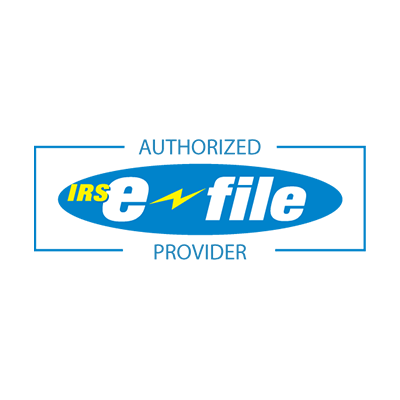Driving your own truck can be a great next step in your career; you get to set your own hours, you can make more money, you choose your copilot (perhaps a furry friend), and you’re able to make whatever upgrades to your vehicle you choose (like a new stereo, for instance). Overall, owning your own truck offers a level of freedom that’s hard to find when working for a trucking company. However, buying a truck is expensive, and not everyone has the funds to do so.
If you aren’t able to purchase a truck outright, one popular option is to sign a leasing agreement. There’s often no money required to get started, no down payment, and at the end of the contract, you might just own a truck. It almost seems too good to be true, right? Well, in many cases, it is. While it may seem attractive on the surface, signing a trucking lease agreement can end up putting drivers in a very bad position. Luckily, there is a simple alternative.
Types Of Drivers
Independent Contractor
An independent contractor is a driver who is not employed by any one company in particular, but instead, operates on their own. Some independent contractors own their own equipment and operate under their own authority, while others may choose to lease equipment and drive with another company using that company’s authority.
Owner Operator
All owner-operators are independent contractors, but not all independent contractors are owner-operators. Owner-operators must own or lease at least one truck, find their own freight to haul, and manage the day-to-day responsibilities of owning a business. However, the main thing that sets owner-operators apart from other independent contractors is that owner-operators maintain their own operating authority, which is a requirement to carry goods in the US.
Company Driver
A company driver is an employee of another entity, and as such, they receive the perks and benefits that entity offers. They take on no financial responsibility for the equipment they use, and they typically make a set wage.
Lease Operator
Lease operators are independent contractors who rent equipment from and haul freight for a company in return for an agreed-upon fee. A lease operator is similar to a company driver in that they don’t get to choose their clients or schedules. However, unlike an employee, they are contractually obligated to stick with the company, and they are financially responsible for the truck they drive.
Types Of Trucking Lease Agreements
Lease-To-Own Agreement
Also referred to as a lease-purchase agreement, those in a lease-to-own trucking lease agreement pay a monthly fee to a company in exchange for use of the truck. When the contract is up, they can then purchase the truck. How it works is rather straightforward; the driver hauls freight for the company, and the company deducts the equipment expenses from the driver’s earnings.
Lease Agreement
Like a lease-to-own agreement, this type of trucking lease agreement involves a company “renting” a truck to a driver for a set fee, the main difference being that at the end of the contract, they are not obligated to sell the truck to the driver. While they could choose to sell the truck, they could also choose to renew the lease or lease the driver a different vehicle instead.
Lease-On Agreement
A lease-on agreement is somewhat like the opposite of the other two. In this trucking lease agreement, the driver owns the vehicle but allows the company to haul their freight with it. Lease-on agreements tend to be better for the driver than the other two lease agreements because the company pays them, finds jobs, and typically deals with most of the paperwork and fuel taxes.
Downsides Of Signing A Trucking Lease Agreement
While lease agreements can be a great way to dip your toes into the water and work towards owning your own truck, they do have their downsides. For many, the pitfalls of these agreements are enough to run in the opposite direction.
The Company Has Full Control
One of the biggest drawbacks of signing a lease agreement is the level of control you hand over to the company. The company decides how many miles the truck can drive, how much the expenses are, and when those expenses are paid. The problem with this is that when freight lanes slow down, companies tend to prioritize giving jobs to their company trucks over those leasing.
If there aren’t enough miles for the driver in a lease agreement, they may not make enough money to pay the expenses on the truck. In those situations, the driver could actually owe the company money at the end of the month instead of it being the other way around. Since the company sets up these agreements, they are typically structured so that the company can’t lose any money, putting the driver in a potentially sticky financial situation.
It Can Be Expensive
Operating a truck is expensive, to say the least, and when you’re bound by the jobs the company gives you, those expenses can dig into your savings. This is especially true if the truck you’ve leased is older or in poor condition, as the cost of repairs can add up fast. Plus, at the end of the contract, the driver may be given the option to purchase the truck they’ve been leasing, and that buyout could come with a hefty price tag.
Potential Loss Of Benefits
Even though the day-to-day lives of those in a trucking lease agreement may look very similar to the lives of company drivers, lease drivers don’t often receive the same benefits (health benefits, perks, etc.).
The Alternative
While a lease agreement may not be the best option for most drivers, there are other ways to work towards owning your own truck. The simplest is to continue working as a company driver, save up until you have enough to pay the down payment on a used vehicle, and then find a trustworthy finance company to work with. If possible, hire a lawyer to review the contract and offer advice before signing to ensure you’re getting a fair deal.
Simplify Your Trucking Taxes With i2290
Whether you own or lease your truck, you’ll have to file Form 2290 and pay the Heavy Vehicle Use Tax. With i2290, doing so is easy. All you need to do is answer a few questions and our software will automatically calculate your taxes for you. Once you file, you’ll receive an IRS stamped Schedule 1 in minutes, and if you need assistance at any point in the process, our world-class customer service team is always happy to help. In fact, if you contact us during business hours, we won’t go home until we respond.
Are you ready for a better way to file and pay the HVUT? Create an account with i2290 today!
Special note: This article is for informational purposes, and is not intended to provide, and should not be relied on for tax, legal, investment, or accounting advice. The best way to ensure you’re entering into a fair agreement and paying appropriate taxes is by following IRS regulations and consulting with a professional.


